A Fully-Updated, No-Nonsense Guide to Electronics
Advance your electronics knowledge and gain the skills necessary to develop and construct your own functioning gadgets. Written by a pair of experienced engineers and dedicated hobbyists, Practical Electronics for Inventors, Fourth Edition, lays out the essentials and provides step-by-step instructions, schematics, and illustrations. Discover how to select the right components, design and build circuits, use microcontrollers and ICs, work with the latest software tools, and test and tweak your creations. This easy-to-follow book features new instruction on programmable logic, semiconductors, operational amplifiers, voltage regulators, power supplies, digital electronics, and more.
Practical Electronics for Inventors, Fourth Edition, covers:
- Resistors, capacitors, inductors, and transformers
- Diodes, transistors, and integrated circuits
- Optoelectronics, solar cells, and phototransistors
- Sensors, GPS modules, and touchscreens
- Op amps, regulators, and power supplies
- Digital electronics, LCD displays, and logic gates
- Microcontrollers and prototyping platforms
- Combinational and sequential programmable logic
- DC motors, RC servos, and stepper motors
- Microphones, audio amps, and speakers
- Modular electronics and prototypes

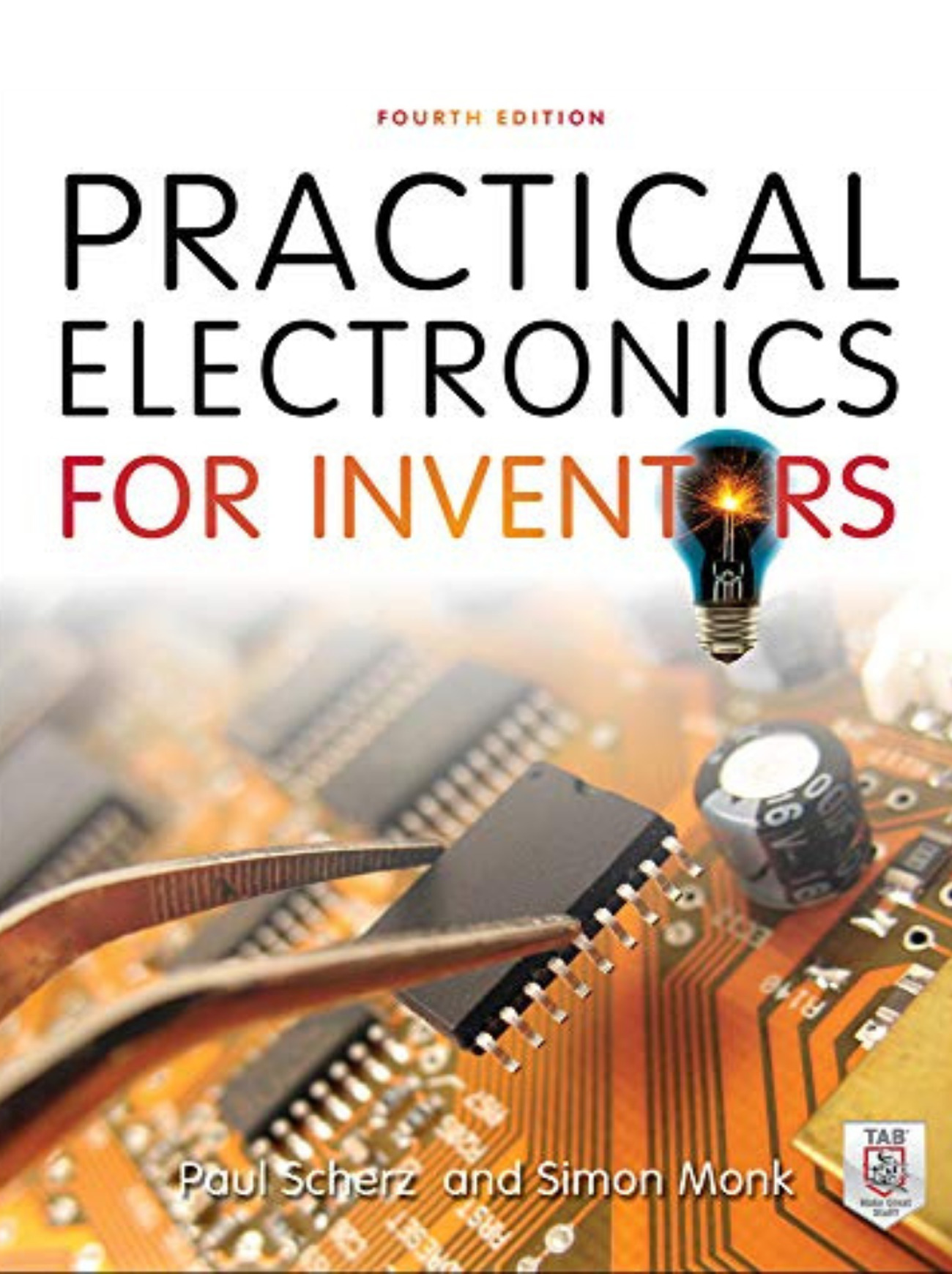
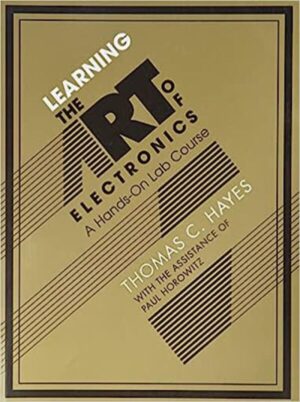
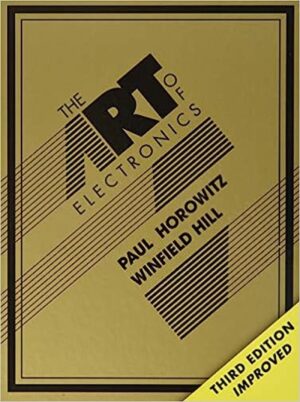
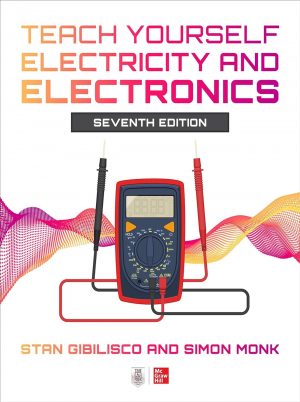
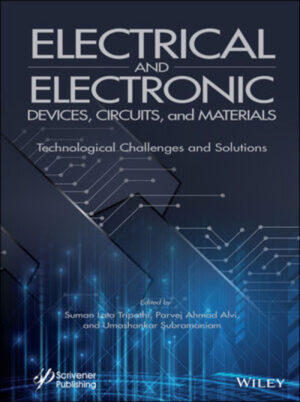
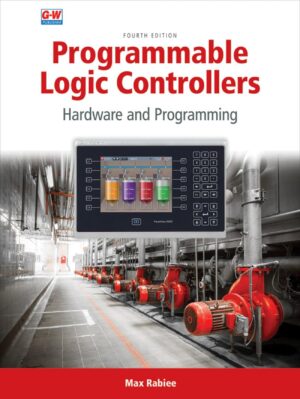
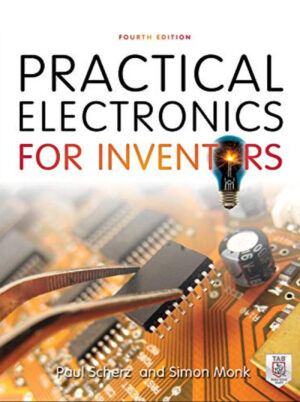
So far, here are some issues (I’ll have to update).
Fig 2.13: technically some of these voltages are negative. Fig 2.14 Should have come first. Then an explanation that Vab = Va- Vb.
A Canadian mentioned that neutral and ground bar are connected at the mains and shouldn’t be. I guess this would be Fig 2.29. So I did some googling. Looks like in the US, ground and neutral bars are connected at the mains only, but not at sub panels. So the figure is fine.
Fig 2.35e. Loads using a bus bar for return. As the authors explain on the next page, this method is for bread boarding ICs where each IC is a load. But they really should emphasize that this should not to be done elsewhere. For example if you have a rack of equipment, each piece of equipment is considered a load; the bus bar should most definitely not be used for return current. Here, d. works. If ICs make up a circuit board that’s relatively complex, again, d. where the loads are now individual circuit boards. In short, e. should not be used for anything beyond breadboarding ICs. (The book does cater to inventors who are probably dealing with ICs rather than racks of equipment.)
Recommended for anyone with an interest in this amazing field
It covers a lot of topics and from different angles. A little from the theoretical view, a little from the practical view with some rules of thumb. This book is highly recommended both for beginners and for people who want to know those little things you can't know without being told by a professional :D
Updated: It's a good book. It's just that the first half is not that practical at all. Like 10 pages on wires or something too much. Practical is a misleading name for this book, so I can't give it 5 stars. I will enjoy reading it now that I have a better foundation nonetheless.
I am very, very glad I found this one.
I would also definitely suggest having a basic electronics lab equipment to complement learning experience.
Refreshingly, it’s also a pleasure to read and doesn’t take itself too seriously, while still conveying accurate concepts. I wish there were a whole series of engineering books this good.
I bought an extra copy to look back on as a reference.
It gets a little too deep me in the theory section, but there are those who could use it.
I only wish some of the mathematical symbols were explained....
Would be easier to hold if it were a smaller format.
As a beginner in electronics, I find some parts of the book a bit difficult to understand at first glance, but overall it's an excellent source of information: you have everything you need to start or deepen your knowledge.
Definitely a must-have.
The topics it covers practically covers all of my electrical enginerring classes. The information is A LOT easier to read and straight forward. Not heavy theory.
The biggest Pro to this books is the price. Seriously, for the price of ~$30 this is a steal.
Not only did I skim through it once it arrived, but I took the time to read multiple chapters just for curiosity sake.
I find myself reviewing this manual at least 3-5 times on every project I am working on, whether hobby or home repair. Tons of info!
And I'm amazed. Tipping the scales at over 1000 pages, it's got a ton of good information, and given the price, that's a win all by itself. But what makes it truly awesome is how clear the explanations are, especially for someone without much of an electronics background. (I'm a programmer, by profession, and had an electronics course or two in college, 30-mumble years ago, but forgot most of it, since then.)
At this point, I'm about 100 pages in, and still reading the theory. The author makes it clear that while there are some bits of "scary math" (calculus, diff eq) shown, to be complete, you can skip over the hairy bits and still understand what's going on. And so far, that's been quite accurate.
But compared to practically *all* the other textbooks I've ever read, and most of the pop sci books, PEI does an outstanding job of explaining things that previously had me quite confused. If only there was a book this good for every field...
That being said the binding has not held up to use very well; pages in sections that I seldom use are beginning to become loose and may soon fall out. The book has not been exposed to any excessive conditions.
I would definitely recommend this book for its content, just be aware of the poor material quality.
Also it's math heavy. You'll hit Limits and Derivatives in formulas in the first few pages.
It's also enormous. Like a large, heavy, text book
I cannot recommend this book enough.
In my opinion, every scientist/inventor/electrician should own this book.
If you know nothing about electronics, and you want two years worth of electrical engineering crammed in your head within a few weeks, this is the book for you. If you would rather get right into building circuits or soldering IC's to do specific tasks, I would consider a simpler text (but still get this as an essential reference!)
Try it and probably you gonna love electronics more.
Overall, it's a very good reference, but not quite as useful all by itself.
The contents are greatly expanded resulting in a much bigger book. The contents are very worthwhile and many an Arduino user new to electronics would be well advised to get and read this book.
Does anyone else feel me out there?
What I do find curious is that the latest version (2016) still mentions the BASIC Stamp 2 (the device which inspired the Arduino), but fails to mention the Arduino-stomping (my opinion) Propeller micro from Parallax which was, like the Arduino, released in 2006.
I believe page 60 contains an error when calculating equivalent resistance. (6.8*13.3)/(6.8+13.3)=4.5k ohms, but the book says 4.3k ohms. Not sure if this book has a website for submitting errata.
The book is basically a TL;DR for an electrical engineering degree.
If you've any interest in electronics/EE, on any scale, from hobby to professional, buy this book. This is my first amazon review in ~300 orders and I feel this strongly. Amazing depth and explanations.
É essencialmente um handbook, voltado para hobbystas experientes e com bons conhecimentos matemáticos.Também poderá ser útil a engenheiros e técnicos; esclarece muitas confusões de natureza conceitual. Tem o defeito de tentar abordar várias áreas em um mesmo volume, o que acaba deixando algumas partes superficiais (motores elétricos,por exemplo)
Pena não ter uma edição em português.
As an aside it is way too much for the high school audience I intended the purchase for. For the right audience it would be a good purchase, even allowing for my above assessment.
p.s. Tell your new robot I said "Hi!"
p.s.s. This book really would make a great paperweight, it's immense as it doesn't skimp on anything, well written and incisive.
p.s.s. If there's ONE book you are going to buy to learn electronics, make it THIS ONE. You'll be glad you did.
My main complaint is that the chapter on theory is a bit weak in making the math comprehensible. The main problem there is that in some places a new formula is introduced that uses a variable such as Q but Q is never defined. If I were writing this then I would create a callout box every time a new formula was mentioned that clearly spelled out what each variable is even if it seems redundant. For example: "Ohm's Law: V=IR. V=Voltage (Electromotive Force) in Volts, I=Current In Amps, R=Resistance in Ohms. I depends on V and R." And do that for every single one. This would make it much more useful for reference when you need to look up a formula and can't remember what Q is supposed to mean.
But the main point of this book is the non-theoretical information that it provides. For example, the real world models of various components like capacitors and wires and how they look in schematic form when stray inductance and leakage current resistance are added. Also, the chapter which is almost like a rewrite of the theory chapter but with most of the theory replaced with the details of various types of real world components that you usually don't think about (such as different resistor and capacitor technologies) is extremely useful. Most of these little details tend to get left out of things like textbooks, perhaps based on the thinking that they're too irrelevant.
Though I wish some of the math stuff had been handled better, anyone trying to build electronics in the real world should buy this book. After buying this I really don't feel like I need any other book.
Lastly, some reviewers mentioned the thin paper. I didn't find that to be a problem. I used to buy some "low cost developing world editions" of books that were printed on paper not much better than newsprint and this book has much better material quality for not much more money than a comparable low cost developing world edition of a textbook.
What makes this book so special is that it doesn't shy away from those muddy areas of electrical theory which have never been adequately standardized, such as the difference between an earth ground, a chassis ground, and a common return path. The authors really know their stuff, and explain how things work with simple analogies rather than hiding behind arcane and near-useless mathematical formulas. Yes, all the equations you need are here, but electrical theory isn't supposed to be a math class where the word problems involve electrons rather than cannonballs.
It's also BIG... seriously, this book is 8.5 x 11" and almost 1.5" thick, and heavy as a brick. The price is a literal steal; far less worthy college textbooks on the subject will literally (pardon the pun) run you 10x the cost or more. You other publishers should be ashamed!
Start with this book. You might need others later, but only to flesh out specialized topics like motors and generators. The only thing wrong with it is that it wasn't available when I started school back in the '80s.
I love this book because it answered a lot of my basic design questions. I however need a more in depth reference to surface mounted devices because of the signal conditioning I need for my project.
If you are new to electronics or just need a more in depth refresher with practical examples, this book will do.
I highly recommend this textbook to someone who is either in college, just graduated, or who just simply wants to learn this topic!
Especially the first two pages listing electronic symbols; such as resistors and capacitors.
Otherwise for the price of $40 and 998 pages excluding the index that is good value.
Well written the math can be a bit heavy but is explained logically.
Happy with my purchase although, I have only plowed through the first 40 pages so far !
Update: January 2017
*** This newly updated edition has many mathematical errors! It's very frustrating to work through the example problems when there are so many mistakes. The only solution is to completely recheck your work, and correct these examples in the book with pen or pencil. I can appreciate that this book comes with so much information at an affordable price, but the many mathematical errors really take away from its value!
I don't get the comments about paper quality. It is pretty much standard, not glossy like a text, but nowhere near the newspaper type you find in component catalogs. Perfectly acceptable.
Whether the mathematics used in Chapter 2 is difficult or easy depends on the reader's prior background. Some knowledge of basic calculus helps, but is not an absolute requirement, as the solution of the equations is given and rather extensively explained by other means. Complex variables are also used, but the mechanics of complex variables calculations are explained clearly, simply and with enough worked examples and exercises to allow a dedicated reader to be able to learn how to get practical results without getting into the technical details.
After chapter 2 the book gets very practical indeed, with detailed coverage of the elements of circuits (chapter 3). This chapter in particular is extremely well written The elements of circuits, from connectors to wires, to the different constructions, advantages, applications and disadvantages of different types of capacitors, resistors, inductors, batteries, connectors and even wires are explained at length.
Transistors, Op Amps and Discrete Logic circuits are covered in the following chapters. An overview of microcontrollers and FPGAs is included but is not as deep, so if your interest is specifically in these you will have to expand with another book. Test equipment, oscilloscope and multimeter principles and use, pcb construction, recommndations on building your electronic component stockpile.... This book has almost everything I can think a beginner would need.
While the book is not hardcover and somewhat floppy, it is sturdy enough to withstand heavy use. My volume is certainly not falling apart. T printing is black and white only, but the drawings and diagrams are very legible and clear. The paper quality used is a bit uneven throughout, with a few pages here and there printed on what seems more porous paper, but all perfectly legible.
Some mistakes have made it to the fourth edition.
1. On pages 182 and 184 the title of the section should be "LCR circuit" instead of "LC circuit"
2. On page 302 section 3.5.2 the denominator of the expression in the example should be 1000 + 3000 ohms, instead of 1000 x 3000 ohms. The result is correctly stated as 4000 ohms.
A well deserved best seller. If you know nothing about electronics it will get you to a very decent level of understanding. If you already know about electronics the explanations, tables, and detailed descriptions are very useful. It has a much gentler learning curve than the other classic book with a practical orientation "The Art of Electronics" by Horowitz, buy both if you can, but "Practical Electronics" is an excellent place to start.
As I mentioned, this is a large book, checking in at nearly 1000 pages. "You could hurt someone with it," as my old literature teacher used to say. It may weigh heavy on the scale, but is light on your wallet, in the $20-$30 range for a new copy. Another reviewer has pointed out that the low price is partially enabled by printing on rather low-quality paper. This is true; the paper is not of particularly great quality, but in my opinion this does not detract from the book's worth. By no means is the book in danger of falling apart, so I would not let this minor issue deter you from picking up a copy.
Now, regarding the content: this book is broken up into 16 chapters, or 17 if you count the three or four-page first chapter. The first "real" chapter is truly colossal, and fills almost 250 pages with the theory of electronic circuits. This alone is worth the price of admission. This is followed by another large chapter that deals with the basic components that are used in circuits everywhere, and includes many useful tables, diagrams, and sketches of almost every variation of the components imaginable (for example, the chapter describes 8 different styles of switches). From here, the book branches out into several areas of circuits. You can continue through the chapters in order, to learn about semiconductors, optoelectronics, and sensors; or you could jump ahead to chapter 12 to start on digital electronics, then continue to microcontrollers and programmable logic. In general, each chapter starts with a basic introduction to the topic, followed by subsections that dig deeper into the specifics. If there is anything to complain about structurally, it would be the rather odd placement of "hands on electronics," which is chapter number 7. The chapter itself focuses on the physical construction of circuits, including safety, diagrams, breadboards, and other lab equipment such as multimeters and power supplies. Given the content of the chapter, I feel that it would have made more sense to place it after the chapter on basic components, rather than wedged between sensors and op-amps. However, I certainly prefer to have the information in a strange location than not at all.
All in all, this is an excellent reference for someone who wants a one-stop shop to review any of the wide variety of topics that are covered. This book does seem to be more focused on breadth of topics than depth, so it may be more useful to hobbyists than professionals. In either case, the book should be a valuable pickup for anyone in search of a solid overview of electronic circuits.
This is great book, with a lot of extra info worked into the 4th edition. And to the publishers credit the price has been kept low. But I have to wonder if this good price was at the expense of the publisher choosing a lower quality paper to stay within a price point.
I would have been happier to pay a higher price for better quality paper in this book. And I feel the Content, and the Authors deserve it.
Overall I'm sad that the publisher took the path that they took when putting this title into print.
In addition to the traditional material on electricity concepts such as voltage, current, and resistance, there is a lot of useful day-to-day information. There is a section on electric motors, a section on home electrical wiring, a section on electrical safety, and lots more. There is a chapter on sensors that is more up to date with the recent advances in less expensive modules that can be used by microcontrollers like the Arduino. Again, no exhaustive detail, but the information is present to spur the reader on to find more detailed information on the internet and in other references.
Thankfully, this book is NOT written like a traditional textbook with lots of theories and derivations of equations. It presents what you need to work with electricity and with electronic components. It's a tutor...it gives you the basics so that you then know how to find the information when needed. At over 1000 pages, there's a high probability that any topic the reader wants to know about is at least mentioned along with the means to find further information.
Paul Scherz started with a classic book with the first edition. With Simon Monk's addition to the team for the Third and Fourth Editions, this book is destined to be the new standard for electronics instruction.